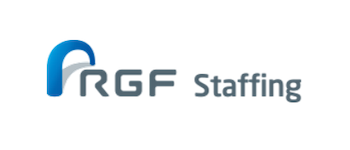Building interfaces while the clock was ticking
Building the interfaces proved to be the trickiest task. There were several reasons for that, Van Daal recalls: ‘First of all, it only became clear at a fairly late stage what exactly the interfaces should look like, so we found ourselves under significant time pressure. On top of that, we started to realize that we and AMIS Conclusion weren’t on the same page in terms of expectations. We were used to a certain way of working with Conclusion AFAS Solutions and Conclusion MBS, but the team at AMIS Conclusion consists of an entirely different set of people, who had different arrangements with their clients. It was at that point we realized that Conclusion is not a single business with a single culture and a single set of working arrangements, but a collective of different businesses instead. Of course, that’s exactly what makes Conclusion so flexible and enables them to respond so quickly, but we didn’t take enough time to reflect on the tradeoffs this might involve.’
Problems are a fact of life: what matters in the end is how you overcome them. And that’s something that left a genuine impression on Van der Meijden: ‘At one point, we simply said “No matter what, we’re just going to get this project over the line together.” And that’s something the team really deserves credit for. Conclusion brought some great people to the project, but so did we. And Mysolutions too was delivered by someone with an impressive eye for detail.’
One person Van Daal explicitly singles out for praise is IT Director Hetty Braam: ‘She took charge of the project from our side, and she did a truly brilliant job. She always stayed right on top of everything, and ultimately, that’s what made the difference.’
Off life support
In the end, SAP was switched off on 1 January 2023 to be replaced by AFAS, Microsoft Business Solutions and the data warehouse, bringing the operation to a successful conclusion. The only part with a few loose ends to tie up and problems to tackle was Microsoft Business Central, but even so, the majority were resolved within a month. As Braam puts it: ‘We knew in advance that we would need to keep the Finance element on life support a little while longer. We told ourselves beforehand that if we got Finance up and running without any hitches or workarounds, we’d be satisfied. And we managed to do exactly that.’
To Hot ITem Conclusion, the go-live of the data warehouse served as the starting signal for a follow-up project to start doing more with data. ‘After all, linking up your source systems to fill your data warehouse cannot be a goal in itself,’ Van Daal observes. In the end, we want to be able to respond more quickly by adopting a more data-driven way of working. The foundations to help us do so are in place. The basic reports and dashboards have been developed, and Excel has been phased out. But there’s so much more we can get out of our new setup. We’re not doing anything with AI yet, for example, so there are plenty of opportunities up for grabs in that area.’
Looking back, the trio are proud of what’s been achieved. Van der Meijden concludes: ‘It was a bumpy ride and we had to dig deep, but we’ve come out the other end in great shape. I’m proud of the fact everyone involved showed so much resilience. When the going got tough, we didn’t start pointing the finger at one another — instead, we lent each other a hand, and we pulled the project over the line as a team, leaving us genuinely fit to face the future in the end.’


